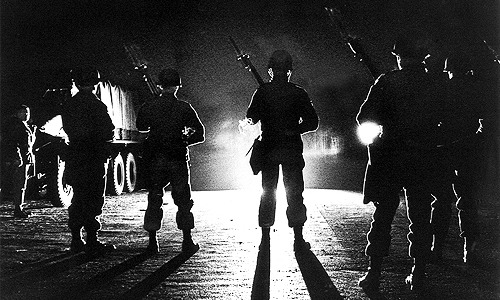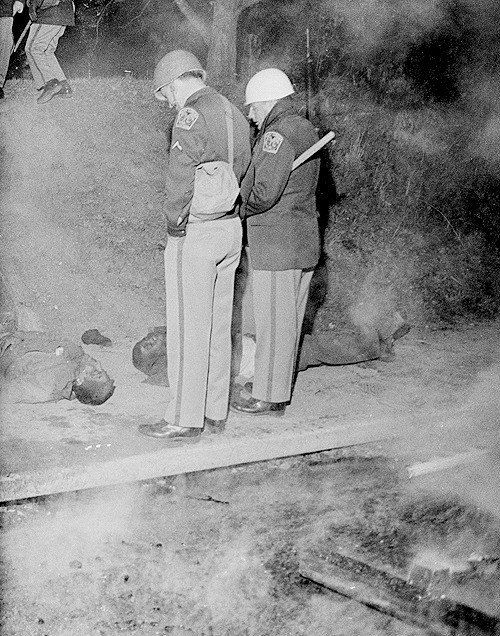Clik here to view.

Image may be NSFW.
Clik here to view.

February 8, 1968: The Orangeburg massacre takes place.
Like the later Kent State and Jackson State shootings, the violence in Orangeburg, South Carolina, began as a student protest. Around two hundred students gathered at South Carolina State University on February 6 to protest the segregation of a local bowling alley, which admitted only white customers. By this time, the landmark Civil Rights Act of 1964, which outlawed the segregation of “public accommodations”, and Heart of Atlanta Motel Incv. United States, which upheld its constitutionality with regard to private businesses, were already four years old; All Star Bowling Lane’s owner claimed that the act did not apply to his bowling alley, but local students disagreed.
Two nights of protest marked by arrests, vandalism, and confrontations between students and policemen passed before the massacre took place. By February 8, law enforcement officials from local policemen all the way up to members of the National Guard had arrived at the campus to prevent any more violence and destruction - although it was their presence that incited it. Firemen, protected by state troopers, arrived to put out a bonfire the students had lit just outside their school’s campus. One state trooper was reportedly hit in the head by a heavy wooden object, whereupon the startled law enforcement officials took up their firearms in a panic and began to shoot indiscriminately into a crowd of unarmed students. The shooting lasted some ten seconds, killed three men, and injured twenty-eight other people, most of whom had been shot in the back or sides. Two of the victims were students at the university, and the third was a high school student whose mother worked on campus as a cleaner. Injuries were horrific as well; one pregnant and married student was beaten at the scene by policemen, and she suffered a miscarriage shortly afterward as a result of the beatings.
Although Governor Robert E. McNair condemned the violence that transpired that night, he also pinned blame for the incident on “black power advocates” rather than the shooters themselves. The exact events that led up to the massacre remain unclear and uncertain, thanks to a lack of accurate media coverage and the governor’s one-sided explanation, which was easily accepted as truth by most South Carolinians, so the case made against law enforcement officials was flimsy. Nine patrolmen were eventually brought to court for their actions, but they were all acquitted of all charges. In fact, the only man who was convicted of any crime related to the Orangeburg Massacre was Cleveland Sellers, an SNCC leader who the police claimed was an “outside agitator”. Sellers served seven months in prison for supposedly instigating the riot.
